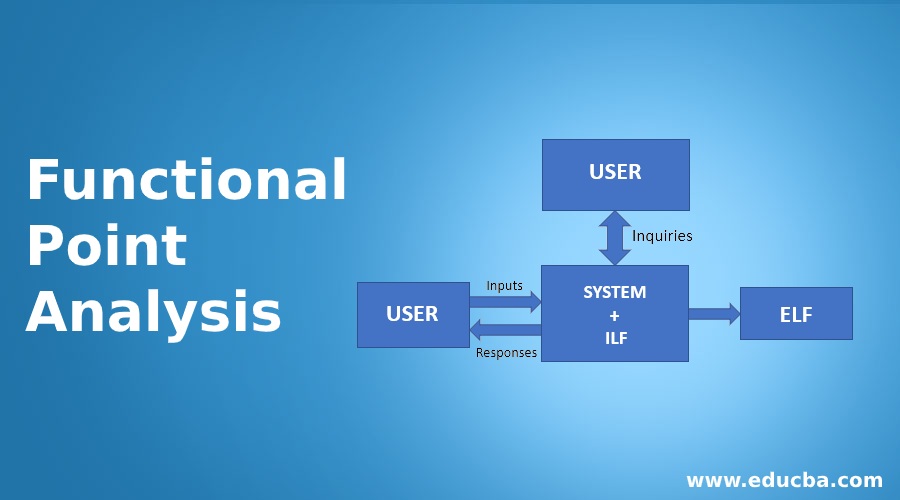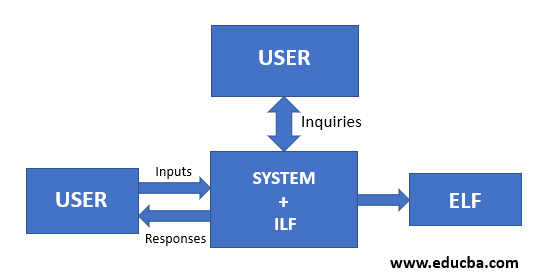Updated March 28, 2023
Introduction to Functional Point Analysis
The Functional Point Analysis (FPA) is a one of the most popularly used software estimation technique to measure the functional size of the software work i.e. It is a method or set rules to measure the amount of software functionalities and software size of the software developed product. It depends on logical view flow of the application i.e. the number of functionalities delivered to the users. The Functional Point (FP) is the measurement of functional size of the software application
Functional Point Analysis
When a new project comes to organisation, the organisation starts planning and estimation on that project in terms of schedule time, cost, resources, etc. The estimation process of software product includes the testing phase in terms of every functionality of the application, so the name shows functional point analysis.
There are multiple parameters in functional point analysis process calculation.
They are as follows:
- External Inputs(EI)
- External Outputs(EO)
- External Inquiries (EI)
- Internal Logic Files(ILF)
- External Logic Files(ELF)
1. External Inputs (EI)
It is a elementary input parameter which is used in functional point analysis process where the input data’s to the application are arranged from the external sources like input screen or business documents or external database or external tables or files i.e. the inputs to the application from outside but within business criteria boundary.
2. External Outputs (EO)
In this elementary process the processed data will be sent to the output in externally i.e. the generated response in terms of log reports or files. This report or files are used as an input for other application. The output screen or reports are examples of EO.
3. External Inquiries (EI)
It is an elementary parameter, which provides relationship between input and output components to retrieve the response/output. The interrupts are the example of external inquiries.
4. Internal Logic Files (ILF)
In this process the group of interrelated or logical data’s are stored inside the system with related to the application standard. The input data’s are processed by the application to stored in a file with logical structure. The database or directories are the examples of it.
5. External Logic Files (ELF)
It is also known as external interface files where the group of logical interrelated external files are stored for reference purpose and used by the software application. It is externally maintained to validate/get the data from that file. The shared database or shared systems are the examples of it.
Calculation:
Step 1: To calculate Total Count (TC) Factor i.e. addition of all individual multiplication of respective weight factors and amount of parameter.
Step 2: Calculate Function Point (FP) by using given formula.
Step 3: Calculate Productivity, documentation, cost per function of the software application.
| Parameters | Weight Factors | ||
| Low | Average | High | |
| External Inputs (EI) | 3 | 4 | 6 |
| External Outputs (EO) | 4 | 5 | 7 |
| External Inquiries (EI) | 3 | 4 | 6 |
| Internal Logic Files (ILF) | 7 | 10 | 15 |
| External Logic Files(ELF) | 5 | 7 | 10 |
(Functional Point Analysis Parameters & Weight Factor Table)
Example
Scenario: Calculate the function point, productivity, documentation, and cost per function for software application with multiple Processing Factors 5, 1, 0, 4, 3, 5, 4, 3, 4, 5, 2, 3, 4, 2 by using following given Date: The number of EI(Avg): 22,The number of EO(Low): 45,The number of EI(High): 06, The number of ILF(Avg): 05, The number of ELF(Low): 02, Effort:37 MM, Software technical documents: 250 pages, User related documents: 120 pages and Budgeting/Cost: $7520 per month.
Solution: Total Cost Factor (TC) = (22*4) + (45*5) + (06*6) + (05*10) + (02*5)
= 409
Function Point (FP) = TC *[0.65 + 0.01*∑ (Xi)]
= 409 *[0.65 + 0.01*(5+1+0+4+3+ 5+4+3+4+5+ 2+3+ 4+2)]
= 409 * [0.65 + 0.01*45]
= 409 * [0.65 + 0.45]
= 409* 1.10
= 450
Productivity (P) = FP Effort
=45037
= 12.16
= 45037
= 12.16
Total Page of Documentation (PD) = Software Technical Documents + User related documents
= 250 + 120
= 370 pages
Documentation (D) = PDFP
= 370450
=0.82
Cost of each Functionalities = COSTProductivity
=752012.16
=$618.421
= $618.5
Advantages and disadvantages of Functional Point Analysis
Given below are the advantages and disadvantages:
Advantages
- It enhances the productivity and workflow process of the software application.
- It estimates the software application functional size.
- It estimates the development time of the software application.
- As a non IT people can easily understand the functional size of application.
- It is a technology independent approach to measure the support and maintenance required for the software application.
- It estimate the each functionalities cost of the software application.
Disadvantages
- It is time consuming process to implement in software application.
- It is costly model of estimation.
- The accuracy of FPA is very difficult as multiple factors are involved on it.
- It requires lots of internal or external parameters or future data’s.
- It is performed after the design configuration.
Conclusion
In this article, we briefly discuss the Software Functional Point Analysis (FPA) in terms of function point and total cost factor. It estimates the software application functional size, productivity, functionality cost, documentation and number of documentation. The process involved by some internal or external or environmental parameters having some standard weight factors. There are multiple estimation methods but, the functional point analysis (FPA) is a best estimation process which describes the project each functionality cost, function point calculation, documentation, size of the software application, etc.
Recommended Articles
This is a guide to Functional Point Analysis. Here we discuss the introduction and example of functional point analysis. You may also have a look at the following articles to learn more –




